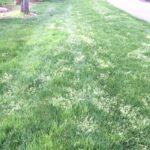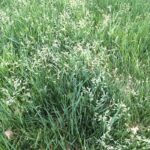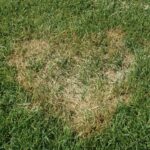Table of Contents
ToggleLast Updated on November 14, 2024
Benefits of a Healthy Landscape
Studies have shown that maintaining a healthy lawn and landscape around homes and places of work can promote higher levels of well-being. There perhaps has never been a stronger testament to this concept than in 2020. With limited social interaction and many faced with staying home a large percentage of each day, home and business owners put a lot of time and energy into improving their lawn and landscape this year.
Lawn and Landscape Improvements
This year, a lot of homeowners had time to invest in making improvements to their outdoor space. We noticed landscape projects with long-term positive health effects for the lawn happened more frequently this year; this includes installing beds around trees to combat erosion, making improvements to drainage, and seeding into the lawn with improved turf varieties.
Customer concerns were a little different in 2020 as well. More homeowners began questioning why they had different types of grass growing in their lawns, why they were seeing so many mushrooms, and what time the technician would be out to their property.
The Weather
In New Jersey there are state laws that regulate when fertilizer can be applied. The winter is off-limits, starting in December each year until the following March. Therefore, the plan for most lawn care companies is to start applications for their customers on the first of March each year; however, there is almost always a delay waiting for the snow to melt (or in some scenarios to stop coming down!) before treatment can begin.
This year we had above average temperatures daily in February and March with zero snowfall. The first round of treatment was able to begin as scheduled for the first time in a few years. This allowed the treatment to begin working against weed growth before they flowered. Broadleaf weed control in spring was very good for this reason.
We received a lot of calls about grass seedheads. Each spring, grass established in lawns grow a seed stalk as a means of reproduction. Depending on how fast the lawn is actively growing relative to how often the lawn is mowed, homeowners may or may not take notice of this process in spring. However, with the weather promoting turf growth all of March and mowers being slowed down by the effects of the pandemic, the seed stalks were in full view on almost every lawn at one point. Luckily, seedheads are of no concern and stop growing after they are mowed away.
The summer brought the wettest July for central New Jersey in recorded history, as well as above average daily temperatures through August. The grass performed well in July as the rain continued, but once it stopped in August, grass species with lower tolerance for heat/drought stress began to show decline in the lawn. The high heat we experienced after a long period of saturation brought a lot of disease. Brown patch fungus was prevalent from the start of August until the end of the month. Disease is not the only issue brought on by heat following rainy periods. Warm season weeds were also very abundant, requests to address nutsedge and spotted spurge in the lawn were coming in daily.
As far as what the winter will bring, I guess we’ll have to wait and see. So far however, it seems to have gotten cooler, especially at night, a little sooner than last year. Seedings that took place later in the fall (after October 1st) will most likely suffer if this trend continues, and require touchup seeding in early spring.
Conclusion
In terms of agronomic issues, 2020 wasn’t really all that different from years we’ve seen in the past. The real adjustments we had to make were geared toward the challenge of operating efficiently through a new social environment. Hopefully 2021 remains as predictable for the turf as we all continue to evolve how we conduct ourselves within the structure of the new “normal”.





